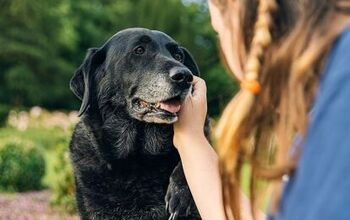As a dedicated rabbit parent, your commitment to providing the very best for your furry companion is undeniable. You want them to thrive, not just survive. That is where the world of mental enrichment comes in. But why is it that when you walk the aisles of your local pet store, all the enrichment toys and products seem to be made for dogs and cats? The good news is that providing excellent enrichment doesn’t require special toys or a hefty budget. In fact, many of the most engaging toys and activities for your bunny can be created using items you have lying around your home. In this post, I’ll explain why enrichment is so important for your rabbit’s overall well-being and share a list of fun, budget-friendly ideas that will have your bunny hopping with joy in no time! When Enrichment Matters for Your BunnyWe often see trends or buzzwords pop up in the pet space, trying to convince us that something is important or necessary for our furry family members. But enrichment is more than that… It is truly a game-changer for your rabbit’s health and happiness. Here’s why: Mimicking Natural Behaviors In the wild, rabbits are high-energy creatures and are constantly on the move. They spend much of their time foraging for food, exploring their surroundings, digging intricate networks of burrows, and interacting with their environment. These aren’t just random activities; they are deeply ingrained instincts. Domestication, while providing these sweet pets with a safe and comfortable home, often limits these outlets. Confined to enclosures, even spacious ones, our pet rabbits can miss out on the mental and physical stimulation they would enjoy from these natural behaviors. By recognizing this, we can find ways to replicate these opportunities and provide safe outlets to fulfill these instinctual needs within the safety of their own home (your home). Combating Boredom and Stress Like us, our rabbits can experience boredom when they aren’t given sufficient stimulation. This lack of mental engagement can lead to a variety of negative behaviors and signs of stress. Signs of bunny boredom include: Excessive grooming, sometimes to the point of creating bald patches Lethargy Lack of interest in their surroundings Sitting hunched in a ball Persistent chewing on cage bars or inappropriate household itemsDigging in their enclosure or beddingRepetitive, seemingly aimless pacing or restlessness Out-of-character escape attempts Making a grunting noise Aggressive behaviors, including nipping or biting Enrichment provides crucial mental stimulation, offering them entertainment, puzzles to solve, new scents and textures to explore, and challenges to overcome. This reduces their boredom and promotes a calmer, more content mindset. Promoting Better Physical Health We often discuss the mental health implications of enrichment, but it also plays a vital role in promoting physical health. Encouraging movement and activity helps prevent the development of obesity, a common and growing serious health concern in domestic rabbits (and, quite honestly, nearly all pets in the US). Regular activity can be encouraged by providing enrichment opportunities, like exploring tunnels, hopping over obstacles, and reaching for hanging treats, all of which help keep their muscles strong and their cardiovascular system healthy. Some enrichment items contribute to your rabbit’s dental. A rabbit’s teeth continuously grow. In the wild, they wear down their teeth by chewing on grasses, hay, and other abrasive surfaces, but not all food provided to domesticated rabbits will fill this need. You can provide your bunny with safe and appropriate items to chew on, such as untreated wood or cardboard, to meet this need and prevent painful dental issues. Strengthening the Human-Animal Bond Engaging in enrichment activities with your rabbit is a great way to spend quality time together and strengthen that all-too-special human-animal bond. When you take the time to create a new puzzle toy, design a foraging box, or simply observe and interact with your rabbit as they explore their enrichment environment, you’re building trust and deepening your connection. Watching their curiosity and problem-solving skills in action is not only rewarding for you but also creates positive associations with your presence. These shared moments of play and discovery are a great way to boost your relationship and build the long-lasting bond we all want to enjoy with our furry family members. DIY Enrichment Ideas: Foraging Fun Foraging is a deeply ingrained natural behavior for rabbits, extending beyond simply searching for their food. In the wild, rabbits will spend much of their day searching for, selecting, and acquiring their meals. This process is highly stimulating, engaging many senses, including smell, sight, and touch. It also helps to keep their minds actively engaged. By providing opportunities for foraging in their home environment, we can tap into these instincts and give our bunnies crucial mental enrichment. Here are a few ways to create foraging opportunities at home: Treat Balls/RollersTurn simple cardboard tubes, such as those from toilet paper or paper towels, into engaging treat dispensers. Cut a few small holes in the tube and place hay or small, healthy treats inside. When given to your bunny, they will need to nudge, roll, and manipulate the tube to release the tasty rewards. Of course, you should always prioritize safety. If you are using glue, do so sparingly, or simply fold the ends of the tubes to securely keep the goodies contained. Hay Boxes/Digging Boxes Repurpose larger cardboard boxes to create stimulating digging and burrowing opportunities. Fill these boxes with rabbit-friendly textures like loose hay, shredded plain paper, or safe, untreated soil. This provides both physical activity and a chance to tap into their natural sense of curiosity and exploration. Different textures also offer a more satisfying tactile experience. Cardboard Castles/Tunnels Encourage exploration and discovery by creating simple structures from larger cardboard boxes. By cutting openings and connecting boxes, you can build tunnels, hiding spots, and multi-room “castles” that offer a change of scenery and opportunities for your rabbit to hop through, hide, and feel secure. Is your rabbit hesitant to explore their new fort? Consider using small treats to create a trail guiding them through the space. Once they have checked out and seen every corner, they will be far more likely to embrace their new castle.



























